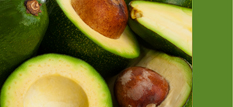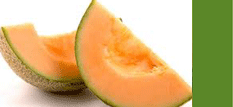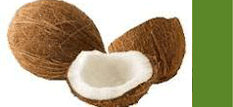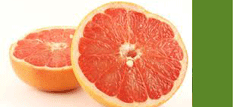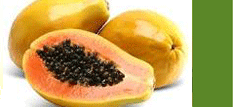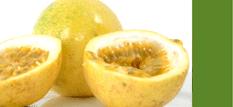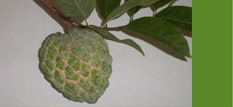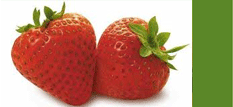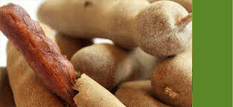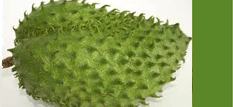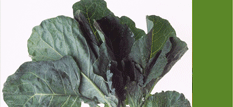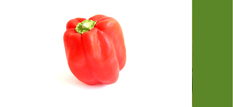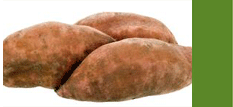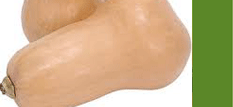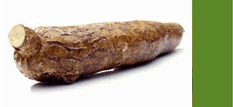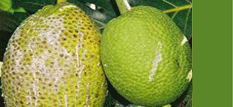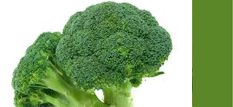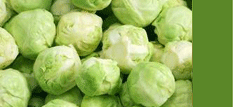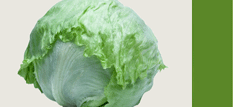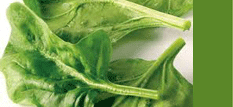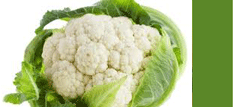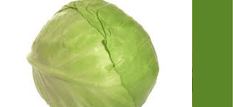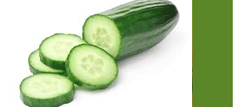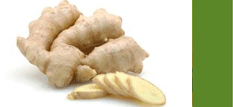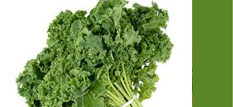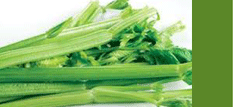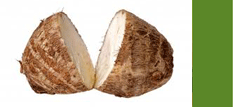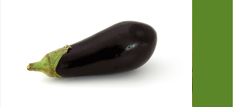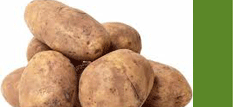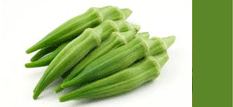FAQs
Breast cancer | Diabetes | HIV/AIDS | Hypertension | Obesity | Workplace wellness
Many women do not learn much about breast health unless they breastfeed or have a problem that needs medical attention. Becoming familiar with breast anatomy and how the breasts function can help you understand the normal changes that occur during your lifetime. This is a good first step in learning about breast cancer and other conditions that affect the breasts.
The breasts are made up of a complex network of milk-producing sacs, passageways for carrying milk, supporting tissue, lymph nodes, glands, tiny muscles and fat. Throughout puberty and menopause, the look of the breasts changes as well as the structure and function of the breasts.
1. What is Breast Cancer?
Breast cancer is a type of cancer where cells in the breast divide and grow without normal control. Between 50 and 75 percent of breast cancers begin in the ducts, 10 to 15 percent begin in the lobules and a few begin in other breast tissues.
Tumors in the breast tend to grow slowly. By the time a lump is large enough to feel, it may have been growing for as long as 10 years. However, some tumors are aggressive and grow much more rapidly.
It is important to understand the difference between invasive breast cancer and non-invasive breast cancer, called ductal carcinoma in situ (kar-sin-O-ma in SY-too).
Invasive breast cancer
Invasive breast cancer occurs when abnormal cells from inside the ducts or lobules break out into nearby breast tissue. This allows the cancer cells to spread to the lymph nodes and, in advanced stages, to organs like the liver, lungs and bones (a process called metastasis). Cancer cells can travel from the breast to other parts of the body through the blood stream or the lymphatic system. They may travel early in the process when the tumor is small or later when the tumor is large.
Ductal carcinoma in situ (DCIS, non-invasive breast cancer)
When abnormal cells grow inside the milk ducts, but have not spread to nearby tissue or beyond, the condition is called ductal carcinoma in situ (DCIS). The term "in situ" means "in place". With DCIS, the abnormal cells are still "in place" inside the ducts. DCIS is a non-invasive breast cancer (you may also hear the term "pre-invasive breast carcinoma").
Although the abnormal cells have not spread to tissues outside the ducts, they can develop into invasive breast cancer.
2. Breast cancer in men
Both men and women can get breast cancer. Though boys and girls begin life with similar breast tissue, over time, men do not have the same complex breast growth and development as women. At puberty, high testosterone and low estrogen levels stop breast development in males. While some milk ducts exist, they remain undeveloped, and lobules are most often absent. However, breast problems, including cancer, can occur in men.
3. What are the signs of breast cancer?
The signs of breast cancer are not the same for all women. In fact, some women have no signs that they can see. If you experience any of these symptoms, you should see a doctor right away:- A lump, hard knot or thickening
- Swelling, warmth, redness or darkening
- Change in breast size or shape
- Dimpling or puckering of the skin
- Itchy, scaly sore or rash on the nipple
- Pulling in of your nipple or other parts of the breast
- Nipple discharge that starts suddenly
- New pain in one spot
Breast lumps or lumpiness
Many women may find that their breasts feel lumpy. Breast tissue naturally has a bumpy texture. For some women, the lumpiness is more pronounced than for others. In most cases, this lumpiness is no cause to worry.
If the lumpiness can be felt throughout the breast and feels like your other breast, then it is probably normal breast tissue. Lumps that feel harder or different from the rest of the breast (or the other breast) or that feel like a change are a concern. When this type of lump is found, it may be a sign of breast cancer or a benign breast condition (such as a cyst or fibroadenoma).
See your health care provider if:- You find a new lump or change that feels different from the rest of your breast.
- You find a new lump or change that feels different from your other breast.
- Feel something that is different from what you felt before.
Nipple discharge
Liquid leaking from your nipple (nipple discharge) can be troubling, but it is rarely a sign of cancer. Discharge can be your body's natural reaction when the nipple is squeezed. Signs of a more serious condition, such as breast cancer, include:
- Discharge that occurs without squeezing the nipple
- Discharge that occurs in only one breast
- Discharge that has blood in it or is clear (not milky)
4. What causes breast cancer?
It's a question women want a straight answer to. At the present time, scientists believe that breast cancer is caused by a combination of both known and unknown factors including genetics (such as family history of breast cancer), lifestyle choices (such as diet and alcohol use) and reproductive factors (such as age of menarche and menopause).
5. What are fibrocystic changes?
Lumpiness plus tenderness or pain at certain times of the month is called fibrocystic breast changes. These changes are a normal part of the menstrual cycle. Women are most likely to notice them in the premenstrual phase of the cycle, or if women are past menopause, when taking hormones. Fibrocystic changes do not increase your chance of getting breast cancer. In contrast, a breast lump that should be checked is one that does not change with your cycle. Any persistent lump or thickening should be checked by your health care provider.
6. What are risk factors linked to breast cancer?
Anything that increases your chance of getting a disease is called a risk factor. Having a risk factor does not mean that you will get cancer; not having risk factors doesn't mean that you will not get cancer. Many factors are linked to breast cancer risk. Some factors affect risk a great deal and others by only a small amount. Some risk factors you can't change. Simply being a woman and getting older increase your risk. Other factors you may be able to control. For example, leading a healthy lifestyle can help lower your chances of getting breast cancer.
People who think they may be at risk should discuss this with their doctor. Risk factors for breast cancer include the following:
- Older age.
- Menstruating at an early age.
- Older age at first birth or never having given birth.
- A personal history of breast cancer or benign (noncancer) breast disease.
- A mother or sister with breast cancer.
- Treatment with radiation therapy to the breast/chest.
- Breast tissue that is dense on a mammogram.
- Taking hormones such as estrogen and progesterone.
- Drinking alcoholic beverages.
- Being white.
Breast cancer is sometimes caused by inherited gene mutations (changes).
The genes in cells carry the hereditary information that is received from a person's parents. Hereditary breast cancer makes up approximately 5% to 10% of all breast cancer. Some altered genes related to breast cancer are more common in certain ethnic groups.
Women who have an altered gene related to breast cancer and who have had breast cancer in one breast have an increased risk of developing breast cancer in the other breast. These women also have an increased risk of developing ovarian cancer, and may have an increased risk of developing other cancers. Men who have an altered gene related to breast cancer also have an increased risk of developing this disease. Tests have been developed that can detect altered genes. These genetic tests are sometimes done for members of families with a high risk of cancer.
7. Do plastics, body care products or deodorant play a role in breast cancer risk? (April 2010)
During the past year, you may have heard a report of concerns over plastics, cosmetics, body care products or deodorants and risk of breast cancer. Whether the media source is the evening news or the Internet, it can be hard to know whether any of these products are likely to pose a health risk. Looking at the overall scientific evidence helps put things into perspective.
Bisphenol A (BPA)
Bisphenol A (BPA) is a chemical found in some plastics and some coatings on metals. Concerns about BPA have centered on its use in plastic and metal food and beverage containers. Small amounts of BPA from the containers can get into the foods and beverages inside. As a result, we can be exposed to low levels of BPA.
However, in January 2010, the U.S. Food and Drug Administration (FDA) announced that it will conduct further studies to look at the health effects of BPA in infants. There is more concern about health risks to infants from BPA because they are exposed to higher levels of BPA than adults from the use of plastic baby bottles and feeding cups.
Parabens
Parabens are a group of chemicals often used as preservatives in cosmetics and body care products such as lotions and hair care products. (Most deodorants and antiperspirants do not contain parabens.) Parabens have been shown to have very weak estrogen activity. And, animal studies have found some health effects of parabens, but only in very large doses.
In 2008, the Cosmetics Ingredient Review Expert Panel, which conducts research on product safety for the FDA, concluded that paraben exposure from cosmetics and body care products was safe. The Panel found the estrogen effects from parabens are so weak that it is highly unlikely they can be harmful to health, especially in the small amounts used in cosmetics and body care products. In addition, the Panel noted parabens do not build up in the body over time and therefore are unlikely to cause harm.
Deodorants and antiperspirants
Similar to concerns about BPA- and paraben-containing products, there have been reports of concern that chemicals found in deodorants and antiperspirants could penetrate the skin of the underarm and cause harm. Although there have only been a few studies looking at use of these products and breast cancer risk, the research to date doesn't support a link between the two. The largest study, which included more than 800 women with breast cancer, showed no increase in risk from use of either deodorant or antiperspirant. It also showed no increase in risk among women who shaved with a razor prior to applying deodorant or antiperspirant. Given these data and the lack of a biologic mechanism, it does not appear likely that use of these products increases the risk of breast cancer.
Current scientific data do not support a link between plastics, paraben-containing cosmetics or body care products, deodorants or antiperspirants and breast cancer. Although BPA does not appear to be related to harmful health effects in adults (including breast cancer), new studies are examining the safety of BPA exposure in infants.
Resources
Susan G. Komen for the Cure®
American Cancer Society
National Cancer Institute
1. What is diabetes?
Diabetes is a disease in which blood glucose levels are above normal. Most of the food we eat is turned into glucose, or sugar, for our bodies to use for energy. The pancreas, an organ that lies near the stomach, makes a hormone called insulin to help glucose get into the cells of our bodies. When you have diabetes, your body either doesn't make enough insulin or can't use its own insulin as well as it should. This causes sugar to build up in your blood.
Diabetes can cause serious health complications including heart disease, blindness, kidney failure, and lower-extremity amputations. Diabetes is also a leading cause of death.
There are different forms of diabetes. Type 1 diabetes, which was previously called insulin-dependent diabetes mellitus (IDDM) or juvenile-onset diabetes, may account for 5% to 10% of all diagnosed cases of diabetes. Type 2 diabetes, which was previously called non-insulin-dependent diabetes mellitus (NIDDM) or adult-onset diabetes, may account for about 90% to 95% of all diagnosed cases of diabetes. Gestational diabetes is a type of diabetes that only pregnant women get. If not treated, it can cause problems for mothers and babies. Gestational diabetes develops in 2% to 5% of all pregnancies but usually disappears when a pregnancy is over. Other specific types of diabetes resulting from specific genetic syndromes, surgery, drugs, malnutrition, infections, and other illnesses may account for 1% to 2% of all diagnosed cases of diabetes.
2. What are the symptoms of diabetes?
People who think they might have diabetes must visit a physician for diagnosis. They might have SOME or NONE of the following symptoms:
- Frequent urination
- Excessive thirst
- Unexplained weight loss
- Extreme hunger
- Sudden vision changes
- Tingling or numbness in hands or feet
- Feeling very tired much of the time
- Very dry skin
- Sores that are slow to heal
- More infections than usual
- Nausea, vomiting, or stomach pains may accompany some of these symptoms in the abrupt onset of insulin-dependent diabetes, now called type 1 diabetes
3. What are the risk factors for type 2 diabetes?
Type 2 diabetes is the most common form of diabetes. Risk factors for type 2 diabetes include older age, obesity, family history of diabetes, prior history of gestational diabetes, impaired glucose tolerance (elevated blood glucose levels but below the diabetic range), physical inactivity, and race/ethnicity. People of African and East Indian origin are at particularly high risk for type 2 diabetes.
4. What is the treatment for diabetes?
Healthy eating, physical activity, and insulin injections are the basic therapies for type 1 diabetes. The amount of insulin taken must be balanced with food intake and daily activities. Blood glucose levels must be closely monitored through frequent blood glucose testing.
Healthy eating, physical activity, and blood glucose testing are the basic therapies for type 2 diabetes. In addition, many people with type 2 diabetes require oral medication, insulin, or both to control their blood glucose levels.
People with diabetes must take responsibility for their day-to-day care, and keep blood glucose levels from going too low or too high.
People with diabetes should see a health care provider who will monitor their diabetes control and help them learn to manage their diabetes. In addition, people with diabetes may see specialists to ensure that any complications are detected and treated early. For example, people with diabetes should have regular eye examinations and routine foot care. Dieticians and diabetes educators who teach the skills needed for daily diabetes management are also important.
People with diabetes tend also to have elevated blood pressure and blood cholesterol as well as being overweight or obese. These problems should also be treated to reduce the risk of heart disease and kidney failure in people with diabetes.
5. Can type 2 diabetes be prevented?
A number of studies have shown that regular physical activity can significantly reduce the risk of developing type 2 diabetes. Type 2 diabetes also appears to be associated with obesity. People can delay and possibly prevent the disease by losing a small amount of weight (5 to 7 percent of total body weight) through 30 minutes of physical activity 5 days a week and healthier eating.
Adapted from the Centers for Disease Control
For more information on diabetes and HIV/AIDS you may visit the following websites:
http://www.who.int/topics/diabetes_mellitus/en/
http://www.cdc.gov/diabetes/
http://www.ndep.nih.gov/
1. What are HIV & AIDS?
Human Immunodeficiency Virus (HIV) is the virus that causes AIDS (Acquired Immune Deficiency Syndrome). As HIV slowly destroys the body's immune system, HIV disease progresses. AIDS is the final stage of HIV disease.
HIV is the virus, AIDS is the disease, and "HIV disease" is the most appropriate way to describe the continuum of HIV and AIDS.
2. Is there a cure?
There is not a cure for HIV disease. A variety of drugs are used to slow down the damage that HIV does to the immune system. When they are effective, these drugs reduce the amount of HIV in a person's body. However, the drugs do not totally rid the body of the virus. There is not a cure.
No one knows how effective these drugs will be over the long-term and occasionally they have life-threatening side effects. The drugs are also costly and require complicated pill-taking schedules.
3. How is HIV Transmitted?
HIV can be transmitted from an infected person to another through:
Blood (including menstrual blood), semen, vaginal secretions, breast milk
Blood contains the highest concentration of the virus, followed by semen, followed by vaginal fluids, followed by breast milk.
4. What activities allow HIV transmission?
- Unprotected sexual contact
- Direct blood contact, including injection drug needles, blood transfusions, accidents in health care settings or certain blood products
- Mother to baby (before or during birth, or through breast milk)
- Sexual intercourse (vaginal and anal): In the genitals and the rectum, HIV may infect the mucous membranes directly or enter through cuts and sores caused during intercourse (many of which would be unnoticed). Vaginal and anal intercourse is a high-risk practice.
- Oral sex (mouth-penis, mouth-vagina): The risk of HIV transmission through the throat, gums, and oral membranes is lower than through vaginal or anal membranes. There are however, documented cases where HIV was transmitted orally. Oral sex is considered a low risk practice.
- Sharing injection needles: An injection needle can pass blood directly from one person's bloodstream to another. It is a very efficient way to transmit a blood-borne virus. Sharing needles is considered a high-risk practice.
- Mother to Child: It is possible for an HIV-infected mother to pass the virus directly before or during birth, or through breast milk. Breast milk contains HIV, and while small amounts of breast milk do not pose significant threat of infection to adults, it is a means of transmission to infants.
5. Can I get the virus from casual contact?
HIV is a fragile and hard virus to get. You do not get HIV from: sneezing or coughing, touching, hugging, dry kissing, public restrooms, saunas or showers, pools, sharing towels, sharing eating utensils or drinks, or being friends with a person who has HIV.
The following "bodily fluids" are NOT infectious: Saliva, tears, sweat, faeces, and urine. HIV is NOT spread through casual contact.
6. Are condoms effective in preventing HIV transmission?
Correct and consistent use of a latex barrier for protection during sex greatly reduces the risk of transmitting HIV. Knowing how to use a latex condom correctly is important. Failure is largely due to incorrect or inconsistent use. Make sure that the condom is latex or polyurethane; natural or lambskin has pores that HIV is able to pass through.
Never use oil-based lubricants like Vasoline®, salad oil or chocolate, which can cause tears and leaks in the latex, ultimately causing it to break. Instead, use a water-based lubricant such as K-Y Jelly®. Also, observe the expiration date on the package and tear it open carefully. Never use a product that has been previously used or exposed to heat or sun.
7. Do I need to get tested?
If you think you may have been exposed to the HIV virus through unprotected sex or the sharing of unclean needles, go to your doctor or an HIV testing site and ask for an HIV test. The most commonly used test to find out if a person is infected with HIV looks for the antibodies to the virus. Antibodies are produced by the immune system to fight the virus. The antibodies can take three to six months to show up in a person's blood. The time immediately after infection is known as the window period. During this time, an HIV test may come back negative because your body hasn't started to produce antibodies against HIV. You can transmit the virus during this window period.
It is important to consistently reduce your risk, however, it is especially important to refrain from any unprotected sex and/or the sharing of unclean needles during the window period in order to get the most accurate test result.
8. What do the test results mean?
A positive result means:
- You are HIV-positive (carrying the virus that causes AIDS).
- You can infect others and should try to implement precautions to prevent doing so.
A negative result means:
- No antibodies were found in your blood at this time.
A negative result does not mean:
- You are not infected with HIV (if you are still in the window period).
- You are immune to AIDS.
- You have a resistance to infection.
- You will never get AIDS.
9. If I test positive, does that mean that I will die?
Testing positive for HIV means that you now carry the virus that causes AIDS. It does not mean that you have AIDS, nor does it mean that you will die. Although there is no cure for AIDS, many opportunistic infections that make people sick can be controlled, prevented or eliminated. This has substantially increased the longevity and quality of life for people living with AIDS.
Adapted from San Francisco AIDS Foundation AIDSHotline.org and Minnesota AIDS Project
What is high blood pressure?
Blood pressure is the force of blood against your artery walls as it circulates through your body. Blood pressure normally rises and falls throughout the day, but it can cause health problems if it stays high for a long time.
How does high blood pressure hurt the kidneys?
High blood pressure makes the heart work harder and, over time, can damage blood vessels throughout the body. If the blood vessels in the kidneys are damaged, they may stop removing wastes and extra fluid from the body. The extra fluid in the blood vessels may then raise blood pressure even more. It's a dangerous cycle.
High blood pressure is one of the leading causes of kidney failure, also called end-stage renal disease (ESRD). People with kidney failure must either receive a kidney transplant or have regular blood-cleansing treatments called dialysis.
What are the signs and symptoms of high blood pressure?
High blood pressure is sometimes called the "silent killer" because it usually has no warning signs or symptoms. Many people do not know that they have high blood pressure. That's why it's important to get your blood pressure checked regularly.
Most people with high blood pressure have no symptoms. The only way to know whether a person's blood pressure is high is to have a health professional measure it with a blood pressure cuff. The result is expressed as two numbers. The top number, called the systolic pressure, represents the pressure when the heart is beating. The bottom number, called the diastolic pressure, shows the pressure when the heart is resting between beats. A person's blood pressure is considered normal if it stays at or below 120/80, which is commonly stated as "120 over 80." People with a systolic blood pressure of 120 to 139 or a diastolic blood pressure of 80 to 89 are considered pre-hypertensive and should adopt lifestyle changes to lower their blood pressure and prevent heart and blood vessel diseases. A person whose systolic blood pressure is consistently 140 or higher or whose diastolic pressure is 90 or higher is considered to have high blood pressure and should talk with a doctor about the best ways to lower it.
What can you do to reduce your risk?
There are several things that you can do to keep your blood pressure in a healthy range—
- Get your blood pressure checked regularly.
- Eat a healthy diet.
- Maintain a healthy weight.
- Be physically active.
- Limit alcohol use.
- Don't smoke.
- Prevent or treat diabetes.
How to Prevent High Blood Pressure
Increases in blood pressure increases your risk for heart disease. People at any age can take steps each day to keep blood pressure levels normal.
Eat a healthy diet. Eating healthfully can help keep your blood pressure down. Eat lots of fresh fruits and vegetables, which provide nutrients such as potassium and fiber. Also, eat foods that are low in saturated fat and cholesterol.
Avoid sodium by limiting the amount of salt you add to your food. Be aware that many processed foods and restaurant meals are high in sodium.
Maintain a healthy weight. Being overweight can raise your blood pressure. Losing weight can help you lower your blood pressure.
Be physically active. Physical activity can help lower blood pressure. The Surgeon General recommends that adults should engage in moderate physical activities for at least 30 minutes on most days of the week.
Don't smoke. Smoking injures blood vessels and speeds up the hardening of the arteries. Further, smoking is a major risk for heart disease and stroke.
If you don't smoke, don't start. If you do smoke, quitting will lower your risk for heart disease and stroke. Your doctor can suggest programs to help you quit.
Limit alcohol use. Drinking too much alcohol is associated with high blood pressure.
If you drink alcohol, you should do so in moderation—no more than one drink per day for women or two drinks per day for men.
Can medicines help control blood pressure?
Many people need medicine to control high blood pressure. Several effective blood pressure medicines are available. The most common types of blood pressure medicines doctors prescribe are diuretics, angiotensin-converting enzyme (ACE) inhibitors, angiotensin receptor blockers (ARBs), beta blockers, and calcium channel blockers. Two of these medicines, the ACE inhibitors and ARBs, have an added protective effect on the kidneys. Studies have shown that ACE inhibitors and ARBs reduce proteinuria and slow the progression of kidney damage. Diuretics, also known as "water pills," help a person urinate and get rid of excess fluid in the body. A combination of two or more blood pressure medicines may be needed to keep blood pressure below 130/80.
What you can do?
- Check your blood pressure. Getting your blood pressure checked is important because high blood pressure often has no symptoms.
Your doctor can measure your blood pressure, or you can use a machine available at many pharmacies. You can also use a home monitoring device to measure your blood pressure.
Blood pressure is written as two numbers. The first (systolic) number represents the pressure in your blood vessels when your heart beats. The second (diastolic) number represents the pressure in your vessels when your heart rests between beats.
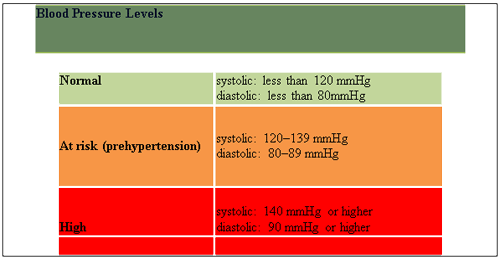
Source:
http://www.cdc.gov/bloodpressure/faqs.htm
http://kidney.niddk.nih.gov/kudiseases/pubs/highblood/index.aspx#control
What is Obesity?
Obesity means having too much body fat. It is different from being overweight, which means weighing too much. The weight may come from muscle, bone, fat and/or body water. Both terms mean that a person's weight is greater than what's considered healthy for his or her height.
Obesity occurs over time when you eat more calories than you use. The balance between calories-in and calories-out differs for each person. Factors that might tip the balance include your genetic makeup, overeating, eating high-fat foods and not being physically active.
Being obese increases your risk of diabetes, heart disease, stroke, arthritis and some cancers. If you are obese, losing even 5 to 10 percent of your weight can delay or prevent some of these diseases.
What are signs and tests for Obesity?
Your health care provider will perform a physical exam and ask questions about your medical history, eating habits, and exercise routine.
The two most common ways to measure health risks from your weight are:
- Body Mass index (BMI)
- Waist circumference (your waist measurement in inches)
BMI is measured using height and weight. You and your health care provider can use your BMI to estimate how much body fat you have.
Your waist measurement is another way to estimate how much body fat you have. Extra weight around your middle or stomach area increases your risk for type 2 diabetes, heart disease, and stroke. People with "apple-shaped" bodies (meaning their waist is bigger than their hips) also have an increased risk for these diseases.
The National Institute of Health measures obesity by a formula called the body mass index (BMI). BMI is the ratio of one’s weight in kilograms to one's height in meters. Adults over the age of 20 can be classified into 4 groups:
- Less than 18.5 BMI – Underweight
- 18.5-25 BMI – Normal
- 25-30 BMI – Overweight
- 30+ BMI – Obese
Your BMI alone cannot predict your health risk, but most experts say that a BMI greater than 30 (obesity) is unhealthy. No matter what your BMI is, exercise can help reduce your risk of heart disease and diabetes. Remember to always ask your doctor before starting an exercise program.
Skin fold measurements may be taken to check your body fat percentage.
How do I determine my BMI?
Your BMI estimates how much you should weigh, based on your height. Here are the steps to calculate it:
- Multiply your weight in pounds by 703.
- Divide that answer by your height in inches.
- Divide that answer by your height in inches again.
For example, a woman who weighs 270 pounds and is 68 inches tall has a BMI of 41.0.
Use the chart below to see what category your BMI falls into, and whether you need to be concerned about your weight.
|
You may also use the chart below to help determine your BMI. Find your height on the left or right side and your weight on the top or bottom. The point where these lines intersect reveals the category you fall in. Obese individuals have a BMI of over 30.
BMI is not always an accurate way to determine whether you need to lose weight. Here are some exceptions:
- Body builders: Because muscle weighs more than fat, people who are unusually muscular may have a high BMI.
- Elderly: In the elderly, it is often better to have a BMI between 25 and 27, rather than under 25. If you are older than 65, for example, a slightly higher BMI may help protect you from osteoporosis.
- Children: While an alarming number of children are obese, do not use this BMI calculator for evaluating a child. Talk to your pediatrician about the appropriate weight for your child's age.
Doctors use a few different methods to determine whether you are overweight. Your doctor may also take your waist circumference and waist-to-hip ratio into consideration.
In addition, a lot of other factors influence your health. These include:
- Blood pressure
- Blood sugar levels
- Cholesterol levels
- Diet
- Physical activity
- Smoking
What are causes, incidence, and risk factors for Obesity
Taking in more calories than you burn can lead to obesity because the body stores unused calories as fat. Obesity can be caused by:
- Eating more food than your body can use
- Drinking too much alcohol
- Not getting enough exercise
Many obese people who lose large amounts of weight and gain it back think it is their fault. They blame themselves for not having the willpower to keep the weight off. Many people regain more weight than they lost.
Today, we know that biology is a big reason why some people cannot keep the weight off. Some people who live in the same place and eat the same foods become obese, while others do not. Our bodies have a complex system to help keep our weight at a healthy level. In some people, this system does not work normally.
Other factors that affect weight include:
- The way we eat when we are children can affect the way we eat as adults. The way we eat over many years becomes a habit. It affects what we eat, when we eat, and how much we eat.
- We are surrounded by things that make it easy to overeat and hard to stay active:
- Many people do not have time to plan and make healthy meals.
- More people today work desk jobs compared to more active jobs in the past.
- People with less free time have less time to exercise.
The term "eating disorder" means a group of medical conditions that have an unhealthy focus on eating, dieting, losing or gaining weight, and body image. A person may be obese, follow an unhealthy diet, and have an eating disorder all at the same time.
Sometimes, medical problems or treatments cause weight gain, including:
- Underactive thyroid gland hypothyroidism. Blood tests may be done to look for thyroid or hormone problems that could lead to weight gain.
- Medicines such as birth control pills, antidepressants, and antipsychotics.
Other things that can cause weight gain are:
- Quitting smoking. Most people who quit smoking gain 4 - 10 pounds in the first 6 months after quitting. Some people gain as much as 25 - 30 pounds.
- Stress, anxiety, feeling sad, or not sleeping well.
- For women:
- Menopause -- women may gain 12-15 pounds during menopause
- Not losing the weight they gained during pregnancy
An active lifestyle and regular exercise, along with healthy eating, is the best way to lose weight. Even modest weight loss can improve your health. You will need a lot of support from family and friends.
When dieting, your main goal should be to learn new, healthy ways of eating and make them a part of your daily routine.
Many people find it hard to change their eating habits and behaviors. You may have practiced some habits for so long that you may not even know they are unhealthy, or you do them without thinking. You need to be motivated to make lifestyle changes. Make the behavior change part of your life over the long term. Know that it takes time to make and keep a change in your lifestyle.
Work with your health care provider and dietitian to set realistic, safe daily calorie counts that help you lose weight while staying healthy. Remember that if you drop pounds slowly and steadily, you are more likely to keep them off.
Extreme diets (fewer than 1,100 calories per day) are not thought to be safe or to work very well. These types of diets often do not contain enough vitamins and minerals. Most people who lose weight this way return to overeating and become obese again.
Learn new ways to manage stress, rather than snacking. Examples may be meditation, yoga, or exercise. If you are depressed or stressed a lot, talk to your health care provider.
Who Is At Risk For Obesity?
Common traits of those who are obese are a high-calorie diet and an inactive lifestyle.
Source:
NIH: National Institute of Diabetes and Digestive and Kidney Diseases
Chart : Wikimedia Commons



